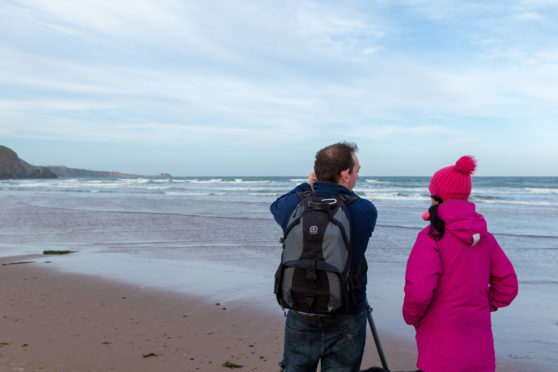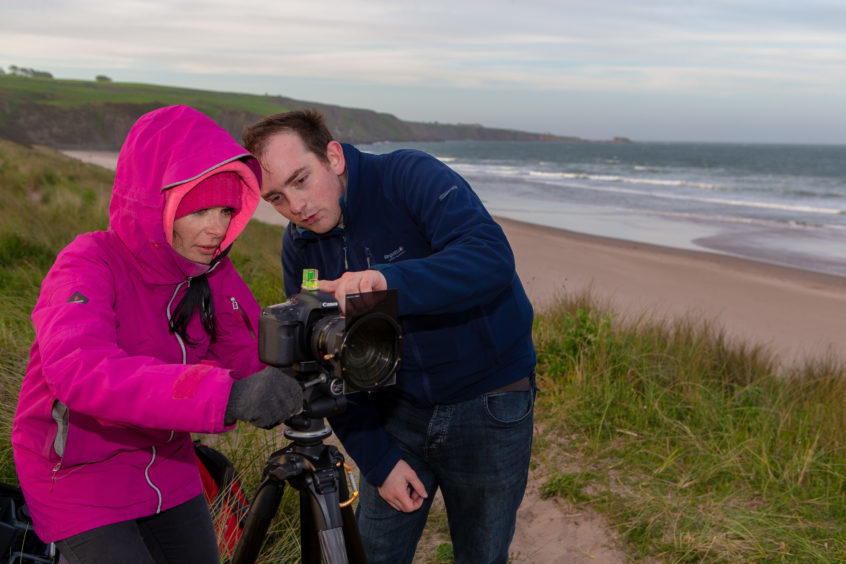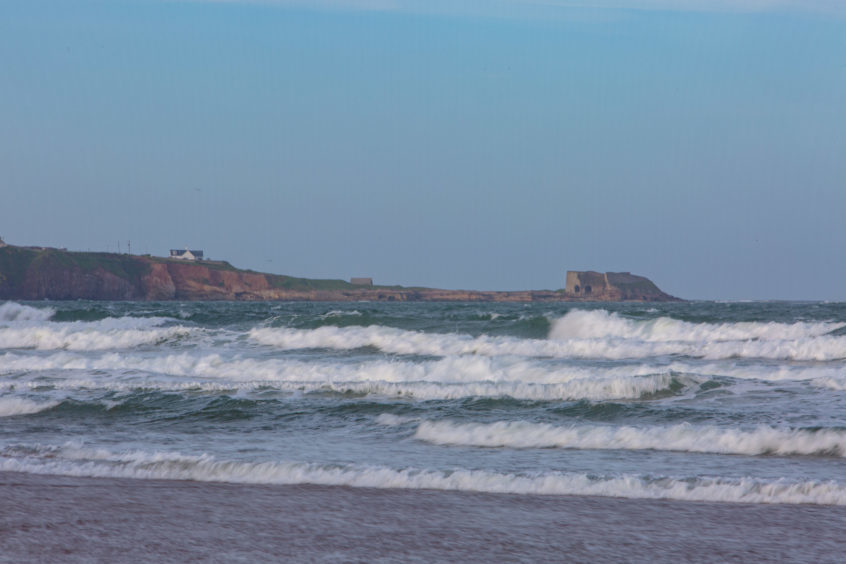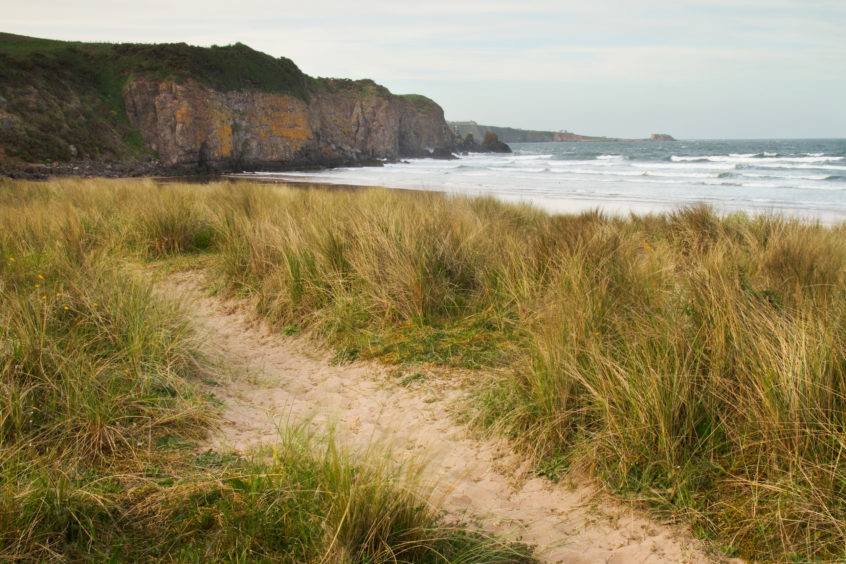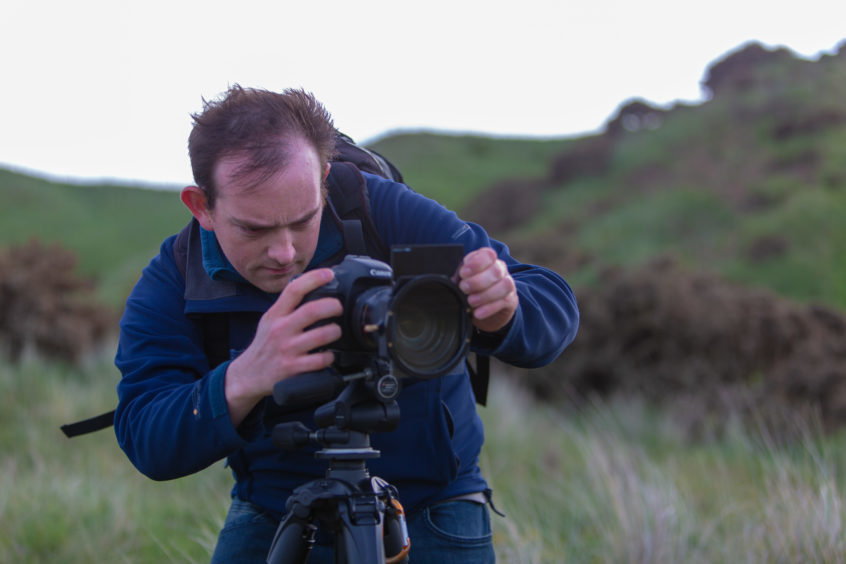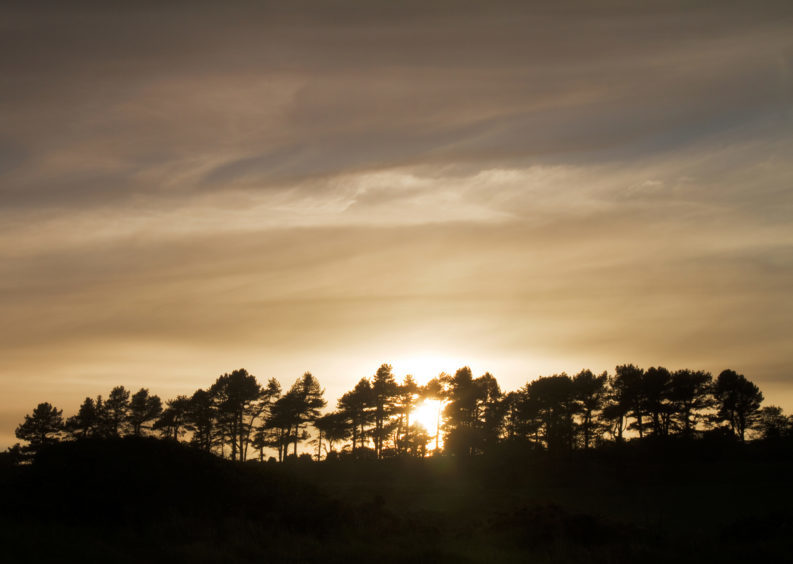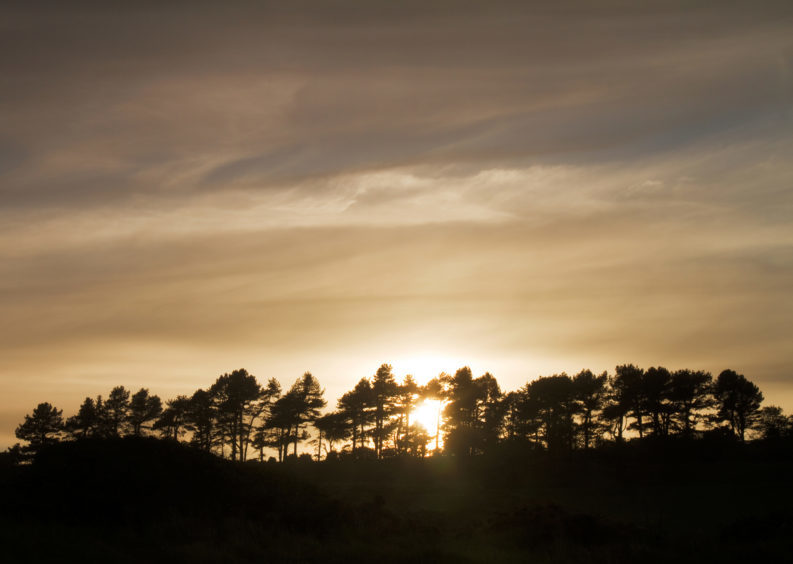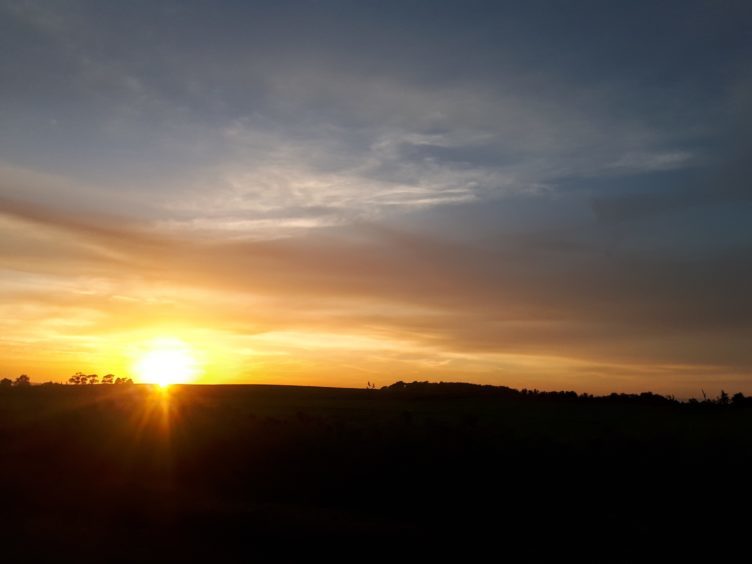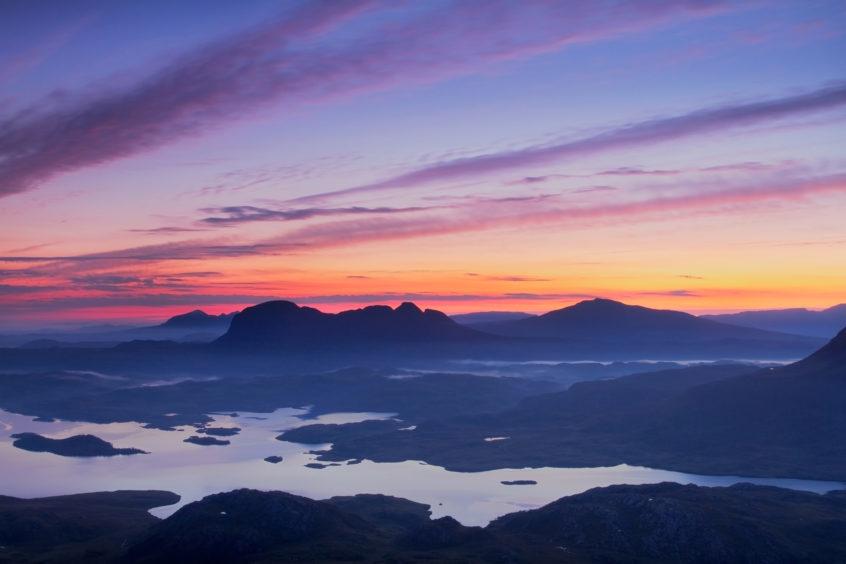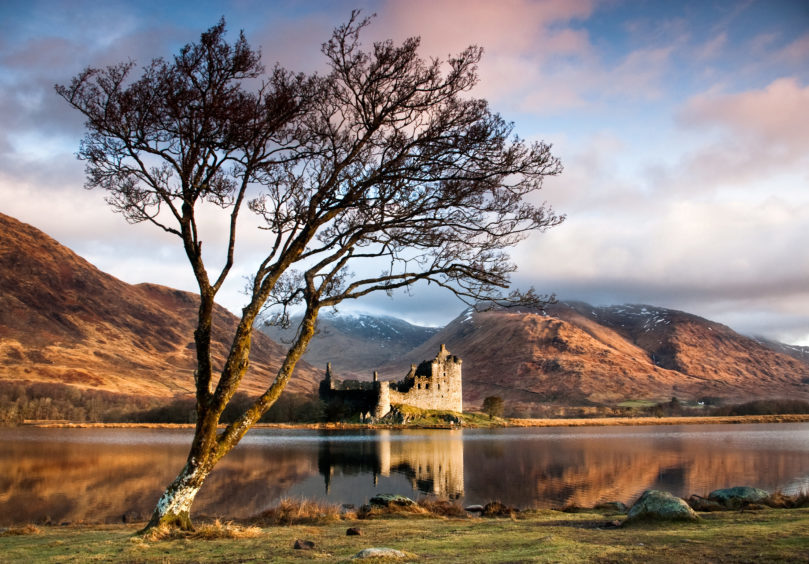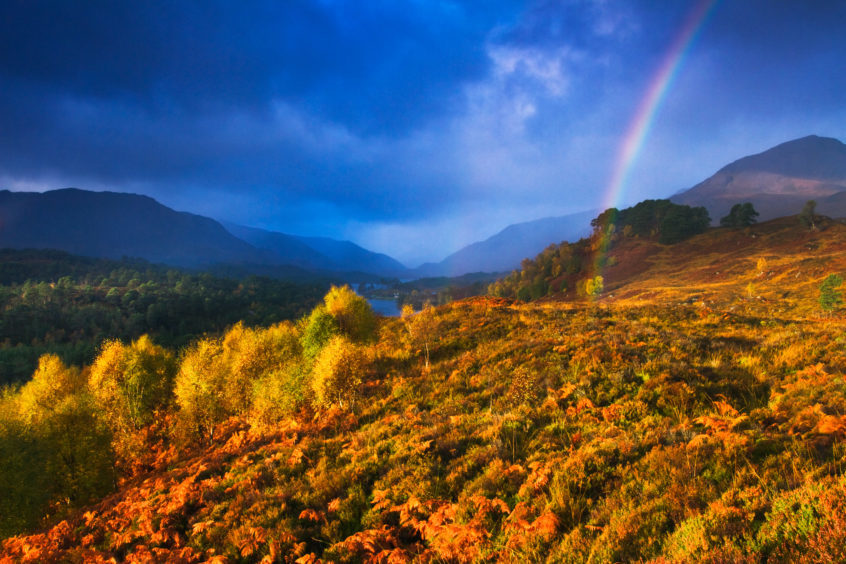Want to take better pictures and break away from using your camera’s “auto” mode? Gayle signs up for a photography workshop
As a bitter wind whips up a tornado of sand, I head for cover in the dunes.
I’ve come to Lunan Bay for a one-to-one workshop with landscape photographer Gavin Ritchie in a bid to improve my snapping skills.
The plan had been to spend the evening shooting a glorious sunset on the beach – I’d even brought suncream – but the sky is dull and the temperature has dipped.
After assessing my photographic experience, which is basically – spot something nice, snap and shoot – Gavin, 27, decides to go back to basics.
Like many folk, I tend to take pictures on my smartphone or simply use the “auto” function on my budget Canon SLR camera. I don’t go near the fiddly wee buttons and dials because I’m somewhat daunted by them.
Setting up his tripod, Gavin talks me through composition and the “rule of thirds”.
“Look at what you want to take a picture of and split it into a grid of nine,” he says.
“The two horizontal lines should intersect the two vertical lines.
“Place your subject on one of the places the lines intersect, rather than centring it. This draws the viewer’s eye into the composition, instead of them just glancing at the centre.”
When it comes to Lunan Bay, and the view we’re looking at – the sea, the cliffs and the waves – Gavin suggests having the horizon on one of the horizontal grid lines, allowing us to highlight either more of the sky, or more of the land.
Because the sky is pretty non-inspiring on this occasion, we hone in on the waves, which are fairly frothing.
Like all rules, the rule of thirds is there to be broken, and spotting a huge container ship at sea, Gavin suggests this might be the time to do exactly that.
“Sometimes it can be effective to place the subject in the centre of your picture,” he says.
“This could have the effect of making it look bigger and bolder.”
Next up is focusing and depth of field. Put simply, this refers to how much of your image is in focus; how sharp it is, from the closest, most in-focus part of the image to the furthest in-focus part. It’s the product of three factors – the lens aperture, the focal length and the distance between camera and subject.
In this case, Gavin sets the aperture at f16, which is all to do with how much light comes into the camera when you take the picture. A quick internet search tells me f16 is also known as “sunny 16” and commonly used.
Then we move on to exposure, with Gavin pointing out the “histogram” – a graph which shows the amount of tones in your photo ranging from black (0% brightness) to white (100% brightness).
“It shows where you’re losing detail in shadows and highlights” he explains, adjusting a dial and taking a picture.
Another image is snapped by zooming in and compressing the perspective, focusing on the waves and headland.
I discover I’m a fan of “lead-in lines” and under Gavin’s instruction, I shoot a photo with a sandy path leading the eye towards cliffs in the distance.
Scaling the dunes higher, Gavin’s eye is drawn to a golden glow lighting up spiky tufts of marram grass; this would have made a fantastic photo but all too quickly, the light fades.
Any hopes of a glorious sunset dashed, I turn my back to the beach and face west where the sun’s rays burst through a tree-lined hill. This draws me, and so, placing the sun and the trees in the very centre of the photo, which sees the histogram go crazy, I take a shot.
“You broke the rules of composition, but that’s fine and you used negative space to capture the texture of the clouds,” says Gavin. This turns out to be the best picture I take tonight. The fact stunning Lunan Bay is right behind me ends up not mattering a jot.
Finally, Gavin gives me some insight into his life as a landscape photographer.
“I’m always proud of the last picture I took but best-sellers are of Kilchurn Castle in Argyll, a rainbow in Glen Affric and one taken from the top of Stac Pollaidh in Wester Ross. It took me four attempts to shoot that sunrise! I got up at 2am every morning until finally, on the fourth morning, I got it. I spend a lot of time waiting for the right moment in this job!”
As I drive home, the sunset we’d been chasing finally reveals itself and I snap a few shots on my phone (oops). They’re decent enough, but I’m determined to learn more about photography in the hope of improving.
I’m not convinced I’ll be getting up at 2am to scale mountains for the perfect sunrise, though!
info
Gavin Ritchie is running landscape photography workshops in the East Neuk on July 21 and 28. You’ll photograph the villages, harbours and other coastal features in early morning light. He’s also running a full-day workshop on October 13 in Glen Rannoch.
One-to-one bespoke workshops are also available.
Perth-based Gavin studied photography at North Glasgow College and the former Glasgow Metropolitan College.
When he’s not taking photos or giving workshops, he works part-time at McDonald’s.
He sells his cards, prints and calendars at events across the country as well as online at www.gavinritchie.co.uk
